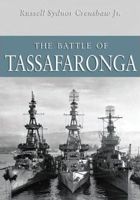

Capt. Russell S. Crenshaw, Jr.’s book The Battle of Tassafaronga has been republished by the Naval Institute Press.
What had happened was a mystery at the time. While destroyer Fletcher had led four van destroyers into an ideal position for a radar-informed torpedo attack, RAdm. Carleton H. Wright, the task force commander, had delayed permission to open fire; then, when the battle thereafter went badly wrong, he second guessed his destroyers for wasting torpedoes! The detailed causes of failure remained obscure, however, and four more cruisers were sacrificed at the Battles of Kula Gulf and Kolombangara in July 1943 before another task force commander* at last acknowledged the basic “fallacy of chasing Jap torpedo boats with cruisers.”
Destroyermen, meanwhile, responded on their own initiative:
In fact, the American force detected the Japanese only six minutes before it was detected in return. Concurrent with the opening of American gunfire, a lone Japanese picket destroyer, Takanami, fired a torpedo spread that hit and disabled the two leading American cruisers, Minneapolis and New Orleans. Subsequent torpedo salvoes hit the other two American heavy cruisers, Pensacola and Northampton, sinking the latter.
On the American side, after World War II when the composition and evolutions of the Japanese force became known to government historians, their analyses still did not capture the whole truth. Never mind: it seemed better simply to forget Tassafaronga as a scar on the Navy’s record.
Half a century later, however, Capt. Russell S. Crenshaw, Jr., Maury’s sagacious gunnery officer during the battle, undertook a proper reconstruction. In his 1995 book The Battle of Tassafaronga, he at last identified the real causes of failure at Tassafaronga—pointedly vindicating Comdr. Cole—and amplified these into lessons for the future.
One more chapter remained. Beginning in 2005, interviews with contemporary destroyer officers filled in additional pieces of the story of the evolution of the CIC. These plus private papers and RAdm. Wylie’s oral history and other records confirm Tassafaronga as a benchmark event with lasting implications for command and control in naval combat. (continued)
*RAdm. Walden L. Ainsworth in a letter to Adm. Nimitz, 16 July 1943.